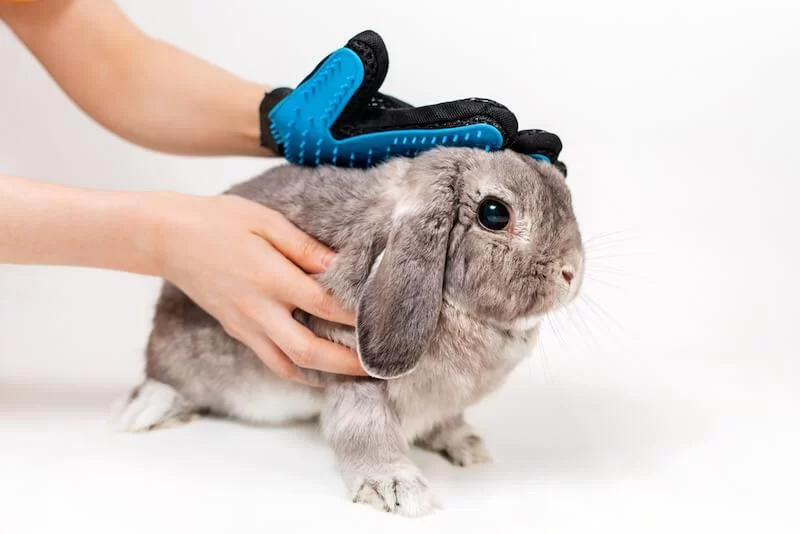Caring for a Pet Rabbit During Molting Season: Essential Tips for Keeping Your Rabbit Comfortable
- 1. Understanding Rabbit Molting
- 2. Why Rabbits Shed Their Coats
- 3. Common Challenges During Molting Season
- 4. Top Tips for Caring for a Molting Rabbit
- 5. Real-Life Stories of Caring for Molting Rabbits
1. Understanding Rabbit Molting
Molting is a natural process that rabbits go through to shed their old coat and grow a new one. This usually happens twice a year, typically in the spring and fall. While some rabbits may shed lightly throughout the year, molting season can be intense, especially for long-haired breeds like Angora rabbits. Understanding this process is crucial to providing the right care for your rabbit during this time.
During molting, rabbits shed large amounts of fur, which can create a mess in your home and may leave them feeling uncomfortable. Molting is triggered by changes in temperature and light, which is why it typically happens in the spring and fall, as rabbits adjust to the warmer and cooler seasons.
2. Why Rabbits Shed Their Coats
Rabbits shed their fur for several important reasons. The primary function of molting is to replace the old coat with a new one that’s better suited to the changing season. In the warmer months, rabbits need a thinner coat to stay cool, while in the colder months, they require a thicker coat for warmth.
Besides temperature regulation, a rabbit’s coat helps with their overall hygiene. Old fur can harbor dirt and parasites, and by shedding, rabbits refresh their coat, helping to keep them clean and healthy. Molting also allows for the growth of a fresh layer of fur that improves the rabbit's appearance and overall comfort.
3. Common Challenges During Molting Season
Molting season can be challenging for both rabbits and their owners. Some of the common issues you might face include:
- Excessive Shedding: Rabbits shed large amounts of fur, leading to hairballs and messy living spaces. This can be particularly challenging for long-haired rabbits, as they produce more fur to shed.
- Skin Irritation: The constant shedding can cause skin irritation or even fur mats, especially if the fur gets tangled. If left untreated, these mats can lead to discomfort and infections.
- Increased Grooming Needs: Rabbits often groom themselves more frequently during molting, which can result in them ingesting more fur. This can lead to gastrointestinal issues like hairballs, which can cause discomfort and potential health problems.
4. Top Tips for Caring for a Molting Rabbit
To help your rabbit through molting season and keep them comfortable, here are some essential tips:
- Regular Brushing: Brushing your rabbit's fur regularly is the best way to manage excessive shedding. For long-haired breeds, daily brushing may be necessary to prevent mats and tangles. For shorter-haired rabbits, weekly brushing should suffice.
- Provide a Healthy Diet: A balanced diet rich in fiber helps ensure your rabbit's fur stays healthy and strong. Offer plenty of fresh hay, leafy greens, and some pellets to support their overall well-being.
- Hydration: Keep your rabbit hydrated by providing fresh water at all times. Good hydration helps prevent constipation and keeps their coat in top condition.
- Monitor for Skin Problems: During molting, keep an eye on your rabbit's skin for signs of irritation or infection. If you notice redness, swelling, or hair loss in patches, consult your vet.
- Manage Hairballs: Hairballs are a common issue during molting. To prevent them, ensure your rabbit's diet includes plenty of fiber and that they have access to fresh hay. If you notice signs of a hairball, such as loss of appetite or difficulty pooping, speak with your veterinarian.
- Maintain a Clean Environment: Regularly clean your rabbit’s living area to manage fur buildup. This includes cleaning their bedding, litter box, and any play areas where fur may accumulate.
5. Real-Life Stories of Caring for Molting Rabbits
To give you an idea of what caring for a molting rabbit looks like in real life, let’s take a look at a couple of stories:
For instance, Emma, a first-time rabbit owner, was initially shocked by the amount of fur her rabbit, Thumper, shed during the spring. She quickly learned that daily brushing was essential to keep his fur under control. With regular brushing sessions and a careful diet, Thumper’s molting season became much more manageable, and Emma noticed a significant improvement in his comfort and overall health.
Similarly, James, who owns a pair of long-haired bunnies, found that combing them twice a day during molting prevented painful mats and tangles. He also introduced a fiber-rich supplement to their diet, which helped prevent hairballs from forming, keeping his rabbits healthy throughout the molting season.
These stories highlight the importance of consistent care and attention during molting. Every rabbit is different, so it's essential to observe your pet’s behavior and adjust care routines accordingly.










